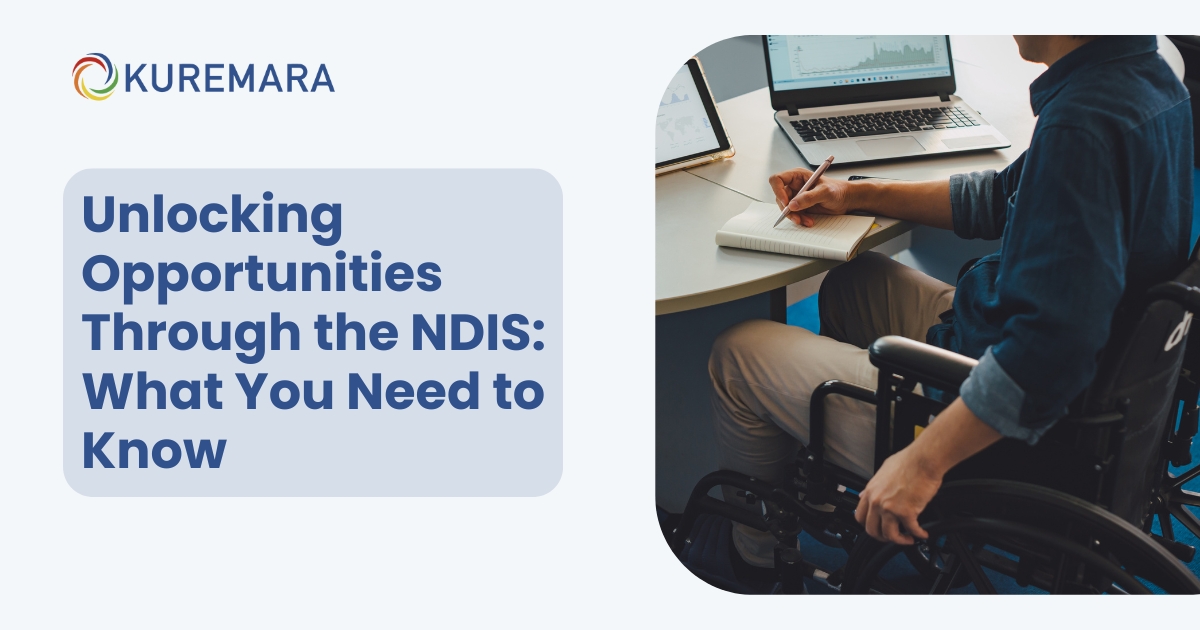Unlocking Opportunities Through the NDIS: What You Need to Know
Navigating the National Disability Insurance Scheme (NDIS) can feel overwhelming, especially if you’re new to it. But here’s the thing—once you understand the basics, it becomes a powerful tool that opens doors to better care, independence, and community inclusion.
In this blog, we’re going to break it all down in simple terms: what the NDIS is, how it works, who’s eligible, and how to get the best support possible. Whether you’re a participant, carer, or family member, you’ll walk away with practical insights and confidence to move forward.
Let’s dive in.
What is the NDIS All About?
The National Disability Insurance Scheme (NDIS) is a government-funded initiative aimed at supporting Australians with permanent and significant disabilities. Instead of a one-size-fits-all model, the NDIS offers individualised funding that helps people achieve personal goals and lead fulfilling lives.
Launched in 2013, the NDIS has transformed how disability services are delivered, giving people more choice and control than ever before.
Who Can Apply for NDIS Support?
To be eligible for the NDIS, you need to meet a few key criteria:
- Be aged between 9 and 65
- Live in Australia and be an Australian citizen, permanent resident, or hold a Protected Special Category Visa
- Have a disability that is likely to be permanent and impacts your ability to perform daily tasks
If you think you or someone you care for might qualify, the first step is to make an access request through the NDIS website or your local NDIA office.
The NDIS Planning Process Explained
Once you’re accepted into the scheme, the next step is creating a personalised plan.
You’ll work with a Local Area Coordinator (LAC) or NDIA planner to discuss your:
- Current supports
- Short-term and long-term goals
- Daily challenges
- What kind of help you need
This plan will outline the types of support you’re eligible for and how much funding you’ll receive under different categories:
- Core Supports – Daily living needs, transport, and consumables
- Capital Supports – Assistive technology, home modifications
- Capacity Building – Employment assistance, therapy, skill development
The plan is reviewed annually, but you can request an earlier review if your needs change.
Services You Can Access Through the NDIS
Once your plan is set, you can start choosing services and providers. Here’s a rundown of common support types:
Daily Living and Personal Care
Funding can cover assistance with tasks like showering, dressing, and eating. Many participants also get support with housework, cooking, and shopping.
Allied Health and Therapy
Therapies such as speech pathology, occupational therapy, physiotherapy, and psychology are commonly included in plans to help improve functional independence.
Community Access
NDIS supports social and community participation, which can include group activities, mentoring, or even classes to build confidence and skills.
Support Coordination
If you find the system a little overwhelming, a support coordinator can help manage your plan, book services, and make sure everything stays on track.
How to Choose the Right NDIS Provider

Selecting the right provider is crucial to getting the most out of your plan. Here are a few tips:
- Do your homework – Check if the provider is NDIS-registered
- Ask about flexibility – Can they adapt services to your schedule?
- Check reviews and testimonials – Past experiences can say a lot
- Talk to them first – A phone call or face-to-face chat can help you decide
If you’re located in New South Wales, you’ll find some amazing service providers in specific regions.
For example, participants can access reliable and professional NDIS providers Central Coast who offer everything from therapy to in-home care, helping individuals achieve their goals without leaving their community.
NDIS Support in Key NSW Locations
As the NDIS grows, more communities across New South Wales are becoming regional hubs for high-quality support services.
Support in Blacktown
Western Sydney has seen a rise in disability support options. In areas like _ NDIS Blacktown, families are finding a mix of culturally inclusive services, youth-focused programs, and mobile therapy providers. This growth means more access to meaningful services close to home.
Services in Campbelltown
In south-west Sydney, NDIS Campbelltown continues to thrive as a local hub for support workers, therapists, and disability-friendly activities. Participants in Campbelltown enjoy access to modern facilities and support services focused on community inclusion, mental health, and independence.
Common NDIS Challenges (And How to Overcome Them)
Let’s be real—it’s not always smooth sailing. While the NDIS has transformed many lives, some participants still face a few bumps along the way:
- Lengthy approval times – Patience and persistence are key. Follow up regularly.
- Confusing terminology – Don’t hesitate to ask for clarification. Your LAC or Support Coordinator is there to help.
- Changing needs – Your plan isn’t set in stone. If your circumstances change, request a review.
- Limited services in rural areas – Consider telehealth or online support services if in-person isn’t available.
How to Get the Most From Your Plan
You’ve got your funding—now what?
Here are a few tips to help you maximise your NDIS plan:
- Review regularly: Needs change, and so should your plan.
- Track your budget: Use apps or a Plan Manager to keep spending under control.
- Set clear goals: The more specific your goals, the easier it is to allocate funding effectively.
- Explore new supports: Don’t limit yourself to what you’ve used before. Try new services that align with your goals.
Remember, the plan is about you, and you have the right to make changes if things aren’t working.
The Future of the NDIS
The NDIS is still evolving. With ongoing feedback and government reviews, improvements are being made to streamline processes, reduce waiting times, and enhance participant experience.
Technology is also playing a role. New platforms and apps are making it easier to connect with providers, manage plans, and track outcomes—all from your smartphone.
As the scheme grows, more Australians will gain access to the tools they need to live fulfilling, independent lives.
Final Thoughts:
The NDIS has truly changed the landscape of disability support in Australia. From personalised funding to greater control over the services you receive, it’s built to put you—the participant—at the center of the system.
While it may feel complex at first, understanding how to access services, manage your plan, and connect with the right providers can empower you to take full advantage of what’s available.
